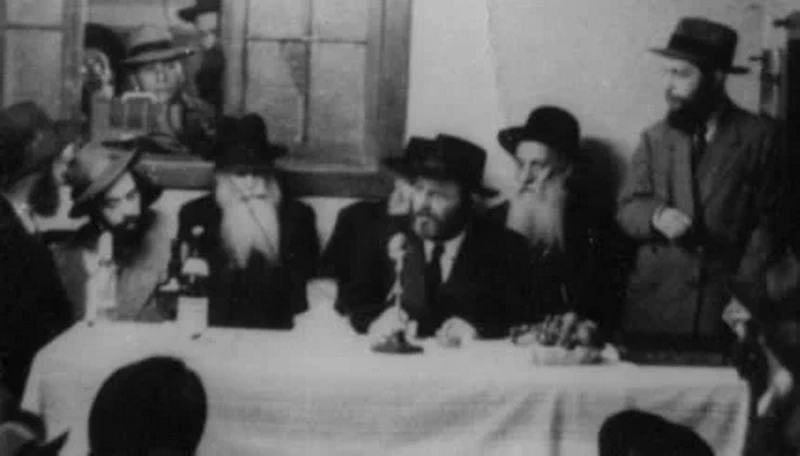
Umedayeik B’Maamar on Basi Legani 5724 with Leho’ir MiBereishis
Yad Menachem has released the next installment in their series of Umedayeik B’Maamar publications, by Rabbi Velvel Adler, which closely examines the exact Yiddish words that the Rebbe used when saying the Maamar Basi Legani 5724.
Spanning almost 200 pages, with 300 footnotes, this year’s Umedayeik B’Maamar highlights many new aspects of what the Rebbe carefully wove into this Maamar.
[In connection with the situation in Eretz Yisroel, a new edition of Leho’ir MiBereishis, on the exact age when a young girl should begin lighting Shabbos Candles, has been appended to this year’s publication. The first edition was appended to Umedayeik B’Maamar on Basi Legani 5719.]
Here’s a sampling of what you can find inside:
What exactly did the Frierdiker Rebbe give us to be learned on his Yom Hilulah? (see note 3)
Do “Yom Hilulah” and “Yom Histalkus” refer to the same day? (see note 4)
When Ikar Shechina was “Bitachtonim,” was it in the entire physical world, or just in Gan Eden? (see note 15)
Why does Basi Legani 5710 identify Kayin, Enosh and the generation of the Mabul as the 2nd, 3rd and 4th sinners, but it does not identify Adam as the first sinner (unlike the Medrash which does mention Adam)? (see note 18)
Are all of the King’s Otzros hidden? Which ones does he use to win the war? (see notes 79, 107)
Are Sarim and Pekidei Hachayil the same people or different people? How do they participate in expending the King’s Otzros? (see notes 85, 86, 89)
According to Basi Legani 5710, is it possible for the battle strategists to be considered the ones who make the Nitzachon happen? Why? (see note 90)
Is there a connection between Betzei Kinim and Maasei Keshofim? (see note 132)
If “Avad Sh’mei” refers to Sheim Havaya, which name does “Nigad Shemei” refer to? (see note 144)
Who said the words “Im Esak Shomayim . . v’Atzi’ah She’ol Hineka” which are brought as a proof in Basi Legani 5710? (see note 151)
How is the intensity of the Ohr connected to the fact that it comes down specifically through Sa’aros? (see note 161)
Was the judgement that Acheir endured worth going through in order for him to reach Gan Eden? (see note 179)
Did the Tzemach Tzedek add some stories to the manuscript of Maamorei Admur Hazokein 5562? (see note 193)
Whose account books did Yosef review? Whose accounts were recorded in them? (see note 203)
The Shevatim were below Elokim, and Yosef was above Elokim. Where was Yaakov? (see note 213)
Is there a connection between “Kadosh, Kadosh, Kadosh” and the Baal Shem Tov? Is this related to the idea of Ain Kadosh k’Havaya? (see note 238)
Which is a better Moshel for the investment of Ohr Ein Sof in “L’Mata Mata” – the Neshama and the Guf, or light shining through a colored glass? What do we learn from the fact that Basi Legani 5710 negates the comparison of Ohr Ein Sof to the Neshama and Guf? (see notes 250, 261)
Does sunlight not shine so brightly here on Earth because the air is polluted or because the light is a Nivra? (see note 291)
You can find these and many more ideas that the Rebbe included in Basi Legani 5724, in this year’s Umedayeik B’Maamar, which provides a unique opportunity to fulfill the Rebbe’s directive (Likutei Sichos vol. 21 p. 448 – free translation): “In order to understand the true intent of the “Divrei Torah” of our Rebbeim, it’s not sufficient to learn them as they have been translated into Loshon Hakodesh (Hebrew) by others, rather we must study the words that they said in Yiddish.”












